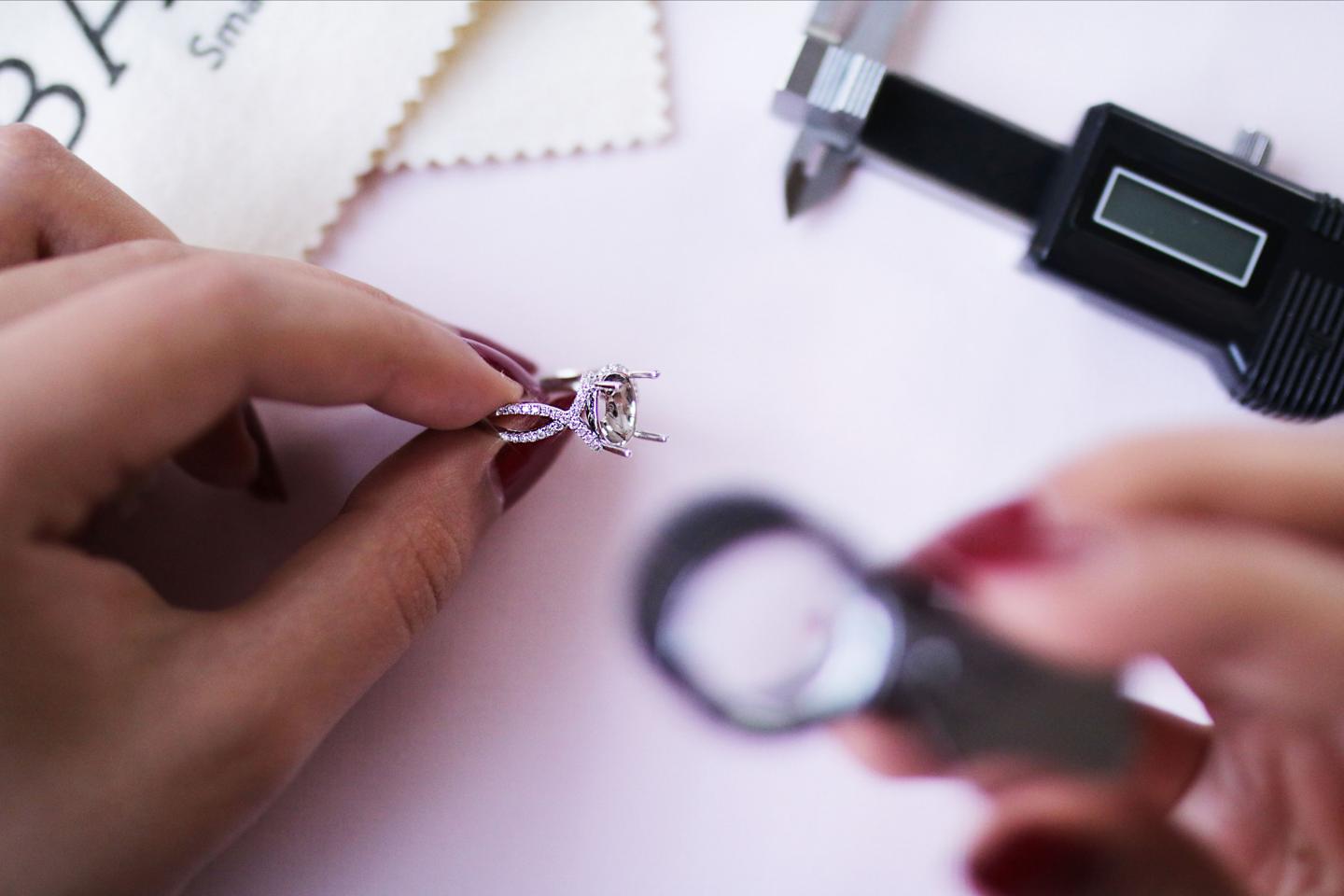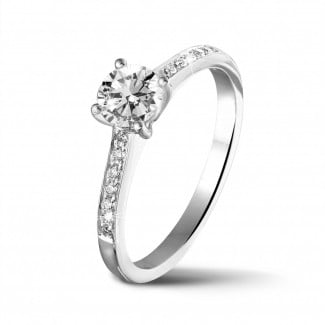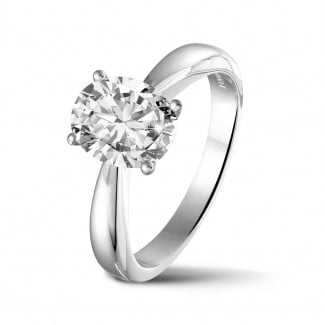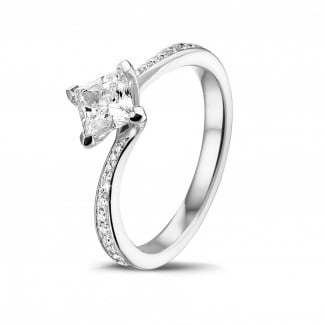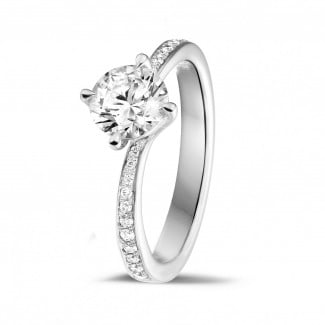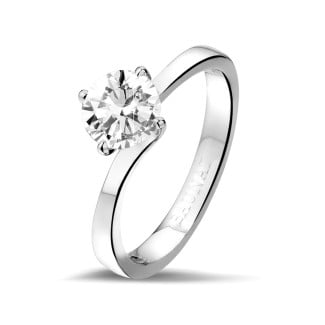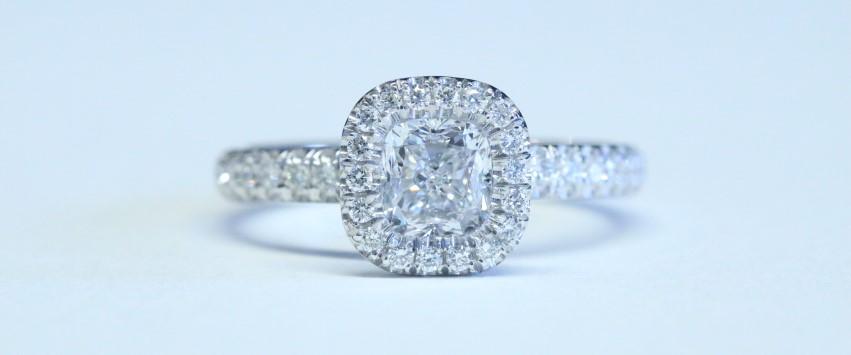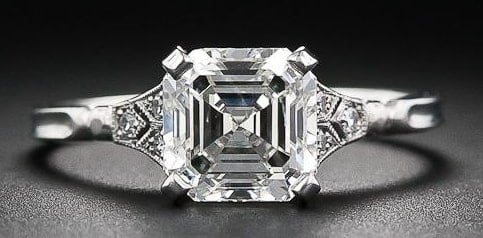Inspirational insights
Blogs in the spotlight
- How do I buy the perfect diamond ring?
- Choosing the perfect wedding ring
- Buying an engagement ring: expert tips & tricks
- Which earrings are the right ones for you?
- How to choose the perfect diamond bracelet?
- How to choose a necklace for ladies?
- Take your time in choosing your watch
- What's the right jewellery for each occasion?
- Why buy diamond jewellery online?
- A guide to building up your jewellery collection
- What types of precious metals are there?
- What types of precious metals are there?
- Jewellery trends and innovations in 2020
- What sorts of diamond setting are there?
- The Old European Cut and the development to the modern brilliant cut
The European Cut (or Old European Cut) is a more square-shaped cut with brilliant facets and gently rounded edges. The upper part of the stone is typically high, with a small table. However, the culet, the facet at the tip of the diamond is so large that you can see it through the diamond when you look at it from above.
Most viewed diamond jewels
When did the Old European Cut come into existence?
The Old European Cut was the most popular diamond cut between 1890 and 1930, when the brilliant cut we know today was created. During that time, the Old European Cut diamonds transitioned from having a cushion or octahedron shape to a more round cut. Their facets also became more regular and symmetrical over the years. The Old European Cut is also known as the Amsterdam Cut or Transition Cut.
During the 1920s, Marcel Tolkowsky developed the Old European Cut into the Brilliant Cut. The culet was reduced in size, the table was enlarged and the angles of the facets optimized in order to achieve a much higher brilliance. You can easily recognize the Old European Cut or Transition Cut by its faceted culet. However, this should be minimal in circumference.
Old-cut diamonds - the predecessors of the brilliant cut
Old European Cut refers to all round diamond shapes that existed in the days before the currently so popular brilliant cut. The fundamental development of the Old European Diamond Cut began in the 14th century. Before that, diamonds were only available in a octahedron shape with eight surfaces, i.e. their natural shape. The first real old cut was a so-called pointed stone. The diamond cutters at that time limited themselves to improving the natural octahedron sides by polishing.
The historical development of the Old European Cut
The pointed stone was further developed into a table stone in the 15th century. The lower as well as upper tip of the octahedron form was removed. This resulted in flat surfaces on the diamond.
The early Old European Cut diamond had a square roundness, not to be confused with today’s Princess cut, which was replaced over time by an octagonal one. In addition, facets were cut on the diamond’s surface. This innovation was made possible with use of grinding wheels. The Old Rose Cut was also developed at this time. Here, the diamond’s underside is polished flat.
The next important step in the diamond cutting journey was in the 17th century, with the Mazarin cut. With this cut, the girdle had more than 12 facets and the upper part more than 16. During the 18th century, Vinzent Peruzzi created another cut, which is now considered a classic old cut diamond. The girdle became square with rounded edges. The upper side has 32 facets, the underside 24. The underside of the diamond is pointed and not flat.
Old European Cut diamonds always appear somewhat darker, because the facets are less pronounced and the light reflection cannot match the modern brilliant cut. Visually, such diamonds look like emerald and baguette cut diamonds. In both cases, the surface should be as polished as possible.
Are you fascinated by diamonds and looking for a beautiful piece of jewellery? The diamond jewellery experts at BAUNAT will be happy to advise you, free of charge and without purchase obligation!

Stephanie Hesters
- BAUNAT Antwerp
- My Linkedin profile - Contact me
 Design collections
Design collections Stackable Rings
Stackable Rings Ruby, sapphire & emerald
Ruby, sapphire & emerald Bestsellers
Bestsellers New arrivals
New arrivals Watches
Watches Cufflinks
Cufflinks Rings for men
Rings for men Diamond
Diamond Sapphire
Sapphire Ruby
Ruby Emerald
Emerald Yellow diamond
Yellow diamond Black diamond
Black diamond
 Diamond rings
Diamond rings Sapphire rings
Sapphire rings Ruby rings
Ruby rings Emerald rings
Emerald rings Yellow diamond rings
Yellow diamond rings Black diamond rings
Black diamond rings
 Stackable rings
Stackable rings Cocktail rings
Cocktail rings Rings for men
Rings for men Bestsellers
Bestsellers Diamond rings
Diamond rings Sapphire rings
Sapphire rings Ruby rings
Ruby rings Emerald rings
Emerald rings Yellow diamond rings
Yellow diamond rings Black diamond rings
Black diamond rings
 Solitaire
Solitaire Dangle
Dangle Diamond earrings
Diamond earrings Sapphire earrings
Sapphire earrings Yellow diamond earrings
Yellow diamond earrings Black diamond earrings
Black diamond earrings
 Solitaire
Solitaire 3 stones
3 stones Halo
Halo Gradient
Gradient Diamond necklaces
Diamond necklaces Sapphire necklaces
Sapphire necklaces Yellow diamond necklaces
Yellow diamond necklaces Black diamond necklaces
Black diamond necklaces
 Gradient
Gradient White gold
White gold Yellow gold
Yellow gold Red gold
Red gold Platinum
Platinum Diamond bracelets
Diamond bracelets Yellow diamond bracelets
Yellow diamond bracelets Black diamond bracelets
Black diamond bracelets
 View watches
View watches View watches
View watches Swiss Made
Swiss Made Swiss Collection limited edition
Swiss Collection limited edition Manufacturing process
Manufacturing process Manual or Automatic watch
Manual or Automatic watch Sapphire or mineral glass
Sapphire or mineral glass
 Rings
Rings Necklaces
Necklaces Bracelets
Bracelets Sapphire
Sapphire
 Engagement rings
Engagement rings Earrings
Earrings Necklaces
Necklaces Bracelets
Bracelets
